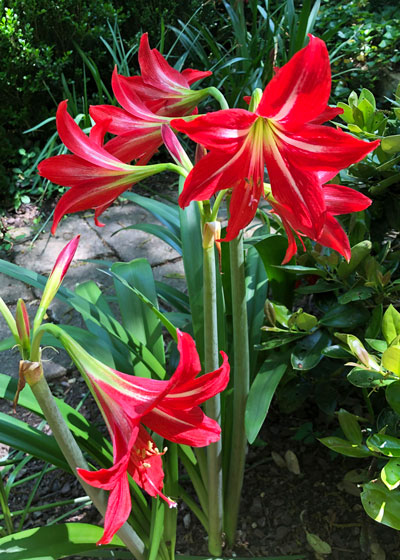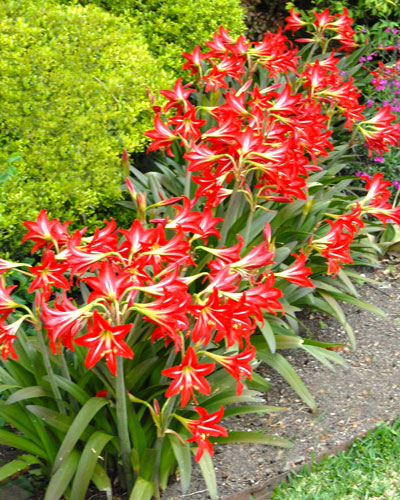St. Joseph’s lily
When I was a kid growing up in College Station most of the perennial plants we had in our gardens were “pass-along” plants. We only had one or two nurseries, and they dealt mainly with balled-and-burlapped arborvitae, junipers and shade trees. Perennials were pretty much out of their question. It was a different world back then.

As I mowed yards I admired what the neighbors called hardy amaryllis. I got myself a “start” from one of the ladies and it did quite well in my gardens. But then I left for Ohio State and Mom and Dad moved out into the country. I guess my clump got left behind – I’m not really sure.
When I came back to Texas with a couple of degrees and a new job in Dallas I started looking for a new “start.” I saw it in bloom in yards in older neighborhoods, but it was a bit awkward to go up to doors and ask for a piece of their plant.
I guess I whined enough about it on my radio program that one day a kind man named Steve Wilson brought an entire clump to one of my All Texas All Garden Shows. He became a good friend, even doing electrical work on my greenhouse (his trade).
Now that original clump has multiplied and been divided enough times that I have probably 200 plants in several parts of our landscape. I’ve paid it forward, sharing plants with friends just as Steve did. And strange as it seems, the plant is still hard to find in Texas nurseries. Southern Bulb Company sells it online You’ll find it in a few other online sources, but know the vendor before you buy.
Here are the basic facts on this plant…
• A hybrid (Hippeastrum x johnsonii)
• Barbados lily (Hippeastrum vittatum) being one of its parents.

• St. Joseph lily is winter-hardy to Zone 7 and suited clear to the Gulf Coast.
• Does best in full sun or at least sun until early afternoon.
• Plant in highly organic garden soil in a moist, well-draining location.
• Unlike many other bulbs, these don’t need to be planted deeply. Set them so their crowns extend up and out of the soil.

• Space the bulbs 12-14 inches apart so that they can develop into a solid planting.
• Leave them undisturbed for several years if you can for maximum display.
• Leave foliage intact after they finish blooming. It is attractive and will remain glossy and green long into the season as long as you don’t allow the plants to dry out. Yellowed or browned leaves can be trimmed off, as can spent flower stalks.
• When you decide to spread your planting to other beds or to share your plants with friends, dig and divide your plants in the fall. Replant them immediately and water them deeply right after planting. They will probably bloom some the following spring, but the showy displays will kick in the second spring.
